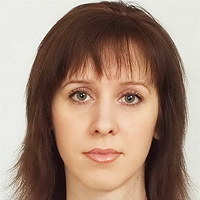Characterization of senegalese races of Xanthomonas oryzae PV. oryzae to identify resistance genes to use
Published on: 19th October, 2022
Bacterial blight (BB), is a disease caused by Xanthomonas oryzae PV. oryzae (Xoo), was first reported in Senegal by Trinh in 1980. BB represents a severe threat to rice cultivation in West Africa. Characterizing the pathotypic diversity of bacterial populations is a key to the management of pathogen-resistant varieties. Pathogenicity tests show that all strains are virulent on the susceptible rice variety Azucena, and interact differentially with twelve near-isogenic rice lines, each carrying a single resistance gene. On this rice panel, six races were identified, two of which were previously reported in Mali (A3) and Burkina Faso (A1). Four races (S2, S4, S5, and S6) are described for the first time in Africa. Races A1, isolated in Ndiaye and Ndioum areas is the most prevalent in Senegal. The Xa1 gene controls 100% of the isolates tested and xa5 controls all isolates except S4 strains. The geographical distribution of Xoo races is contrasted. Four races are detected in the North and two in the South East of the country. Race S4 can be a major risk to rice cultivation because strains from this race are the most virulent and can only be controlled by Xa1. To identify local sources of resistance, we screened Xoo strains representative of the various races on twenty-three rice varieties grown by farmers in Senegal. Four rice varieties namely Sahel210, Sangangbye, Dansna2, and Sahel305 effectively control all the isolates tested. Our characterization of the first collection of Senegalese Xoo strains provided insight into the races present in the country and identified sources of resistance in local rice varieties. This information will help design effective breeding programs for resistance to bacterial leaf blight in Senegal.
Rehabilitation protocol with VISS system and human synergy mat in subjects with flat foot problems in developmental age
Published on: 18th October, 2022
The flat foot can be defined as a syndrome with multiple etiopathogenesis, characterized by an altered structure of the longitudinal arch of the plantar vault with its reduction in height. The plantar arch collapse can be counteracted by strengthening the muscles involved; for many years, specific physical exercises have been proposed for this purpose in physical and rehabilitation medicine. Our work aimed to improve the plantar arch muscles’ tone using high focal vibration therapy (300 Hz). Methods: 49 children with a 3rd degree flat foot (age: 8,7,6) underwent 10 sessions, 2 days/wk, of 30 min of focused high vibratory therapy at a frequency of 300 Hz (Vissman, Italy). Before and after treatment stabilometry (StT), static and dynamic baropodometry tests were performed. Results: Evaluation of StT showed an improvement in stability and a decrease in the sway area and ellipse area. Baropodometry tests showed a decrease in foot surface. Also, dynamic tests showed a decrease in both foot surfaces. Discussion: The results lead us to consider this method as a method of the first choice for a conservative approach in the rehabilitation of flat foot syndrome and also for 3rd grade children [1,2].
Colorectal cancer: physical activity, obesity and consumption of foods a case-control study in the east of Algeria
Published on: 14th October, 2022
Purpose: To evaluate the role of dietary components, physical activity, smoking and Obesity in colorectal cancer.Materials and methods: With a population-based case-control study, 49 colorectal cancer patients and 72 controls were interviewed with uniform questionnaires. Conditional logistic regression was used for multivariate analysis of colorectal cancer. A total of 121 pairs of case controls were interviewed.Results: Relationship between body mass index (BMI) and colorectal cancer was shown in this study, obesity was shown in 21 patients (42.86) before cancer and in 0% of patients during colorectal cancer. Physical activity was a significant risk factor p < 0.0001. Malnutrition was noted in 48 patients (97. 96%) according to Brachial muscular circumference in patients with colorectal cancer (p = 0.002). Daily consumption of sugar Khi² of Wald (5.423) and butter Khi² of Wald (7.694) is higher in cases than in controls. During that time, high daily consumption of pasta (p = 0.018) and vegetables (p = 0.045) was a protective factor for colorectal cancer.Conclusion: Colorectal cancer in Algeria was related to dietary and environmental factors. The research results support the colorectal cancer etiological hypothesis of deficiency vegetable and high consumption of lipids and sugar. Obesity and lack of physical activity were also correlated with colorectal cancer.
A relevant article, white papers and other documents concerning the mRNA vaccine: an interesting collection useful to better understand some phenomena and to generate hypotesys
Published on: 13th October, 2022
The aim of this work is to report some interesting references and documents related to the mRNA vaccine. Every cited reference can act as an instrument to better understand what some independent researchers find: this work is mainly focused on the public debate related presence/absence of graphene derivates in some vaccine vials for COVID-19. Relevant classic articles White Papers or other kinds of a document are useful instruments to better clarify some crucial aspects of this infectious disease, its epidemiology and the efficacy of the measure adopted (preventive, therapeutic, or vaccine).If the reviewed article show an intrinsic recognized international value other kinds of source like a White Paper or other documents can be of interest to generate hypotheses or to open public discussion on crucial topics. For this reason, it is useful to use this method also in the discussion related to impurity profiles in new innovative bio-pharmaceuticals like the mRNA vaccine. The fact that this product was introduced with an emergency authorization, whit reduced the time of experimentation and due to the lack of official quality information related to some raw materials used authorizes us to use also this method.Even if the international official regulatory agency does not find this substance in the control for release of the lots it is interesting to more deeply investigate what funded by an independent researcher in some vials of vaccine or sample patient’s blood after vaccination. This reference even if not a smoking gun the same can stimulate the reasoning about the general concept involved. It is needed, to read this work, to consider the intrinsic limitation of some of the study research reported (White Paper) or the other documents.
State of the science in diabetic foot: subjective screening vs. objective diabetic neuropathy examination in primary care
Published on: 14th October, 2022
Among the conditioning factors of Diabetic Foot (DF), neuropathy is considered the main factor, arteriopathy the aggravating factor, and foot deformities the triggering factor. The preventive interventions for DF and its complications are distributed by levels of care. At the higher level, hospital care focuses on reducing DF amputations. At the lower level, Primary Care (PC) and Podiatry, focused on preventing DF. PC is considered the ideal place to identify the conditioning factors of DF. In this area, prevention follows the recommendations of the International Working Group on Diabetic Foot (IWGDF) by screening neuropathy focused on the sensitive or insensitive foot. The American Diabetes Association (ADA) a recommends person-centered assessment of neuropathy by clinical examination of symptoms and signs testing sensory, motor, and autonomic neuropathy. This controversy lead us to investigate which methodology (screening or clinical examination) could be more accurate in identifying the conditioning factors of DF in a group of people recruited in the TERMOPIEDI study. Neuropathy was assessed following the definition of diabetic neuropathy, the Young MJ diagnostic criteria, and the Toronto Council diagnostic category. These results allowed us to know the applicability of this procedure in PC within nursing competencies, detecting a greater number of patients with neuropathy compared to the screening method. People with neuropathy presented higher plantar temperature, concluding that neuropathy interferes with foot thermoregulation.
Pretreatments, dehydration methods and packaging materials: effects on the nutritional quality of tomato powder: a review
Published on: 13th October, 2022
Pretreatments and drying are commonly used before drying tomatoes to inactivate enzymes, improve the drying process, and improve the quality of dried tomato powders. In this review, the effects of different pretreatments (osmotic solutions), dehydration methods, and packaging materials on the quality attributes of tomato powder were summarized. These include pretreatments and osmotic agent solutions (potassium metabisulfite, calcium chloride, sodium metabisulphite, ascorbic acid, citric acid, sodium chloride, and sodium benzoate), thermal blanching (steam blanching and hot water) and non-thermal-processes-like-freezing, sulfuring, etc. and drying methods (oven, sun, and indirect solar dryer). The tomato powders were dried to preserve, store, and transport them. Drying implies not only physical changes, which the consumer can easily detect through visual inspection but also chemical modifications. These are responsible for alterations in color, flavor, and nutritional value, which compromise the overall quality of the final tomato powder. Maximum lycopene, vitamin A, and C contents were found in freeze-dried and direct sundried than samples dried using other methods at low drying temperatures. Freeze driers showed in keeping the nutritional quality of tomato powder with a combination of different pretreatments. Different pretreatments including osmotic agent solutions have their own merits and demerits for the final tomato powder. To overcome the drawbacks of nutritional quality, non-thermal pretreatment categories may be a better alternative to thermal blanching, and more fundamental research is required for better design and scale-up.
Experience in optimizing the accessibility of services for tuberculosis in the Republic of Tajikistan
Published on: 13th October, 2022
OCLC Number/Unique Identifier: 9652747316
Many researchers in their publications on tuberculosis (TB) in high-burden countries recommended the integrated work of different ministries and departments with the involvement of non-governmental public associations, volunteers, and activists, including former patients [1-8].
ESG (Environmental, Social and Governance) in construction civil: concept that can contribute to the sector
Published on: 11th October, 2022
The search for a sustainable development path capable of satisfying the needs of the current generation without compromising the well-being of future generations is not a new challenge. In recent years, climate change and, more generally, the transition to a sustainable development model have become increasingly important. According to the European Central Bank [1], guidelines on sustainable finance, a company aims to develop value by adhering to relevant ideals, such as fair remuneration for employees, respect for ethical and social values and preservation of the environment.
Study of ESG criteria and metrics for the construction industry
Published on: 11th October, 2022
Considering the performance of supply chains in the three dimensions of sustainability; Economic, Social, and Environmental, ESG scores can function as a measurement scale [1]. Environmental, social and corporate governance (ESG) is an extension and enrichment of the concept of Socially Responsible Investment (SRI) and is an important measure of corporate sustainable development [2,3].
A surgical procedure for re-implanting a tooth that has been rendered hopeless because of periodontitis: a case report
Published on: 7th October, 2022
Aim and methodology: This article describes a periodontally compromised, hopeless incisor tooth that was purposefully replanted, along with the results after six months. This entails the deliberate removal of the tooth and its subsequent correct manipulation and endodontic restoration before reinserting it into the socket.Results: Hopeless lower incisors with periodontal involvement were transplanted utilizing an implant surgical drilling approach after receiving root canal therapy and tetracycline-HCI conditioning. Bone graft material was added and the procedure was monitored for six months. The tooth was observed to be asymptomatic, functioning normally, and showing no pathologic radiological changes. With minimal bleeding during probing and no growth of pathological pockets, the periodontal condition was within normal limits. Alveolar bone support was seen to be adequate. The results may suggest that, in some circumstances, purposeful replantation is a viable strategy of treatment for maintaining native dentition.Conclusion: Intentional tooth reimplantation can be an alternative treatment option for periodontally involved teeth with poor or hopeless prognoses.




